Lupins, also known as lupine, is a beautiful and versatile plant that can add a touch of vibrant color and texture to any garden. These herbaceous perennials are native to the Mediterranean region but have become popular worldwide due to their hardiness and easy cultivation.
Whether you are a seasoned gardener or a beginner, learning how to grow lupins can be a rewarding experience. With their tall spires of pea-like flowers and attractive foliage, lupins are visually appealing and attract beneficial pollinators to your garden.
Here we will cover everything you need to know about growing lupins. From choosing the right variety for your garden to preparing the soil for planting, watering, and feeding your plants. Additionally, we’ll provide tips for maintaining healthy and vibrant lupin plants, troubleshooting common problems, and harvesting and storing lupin seeds for future planting.
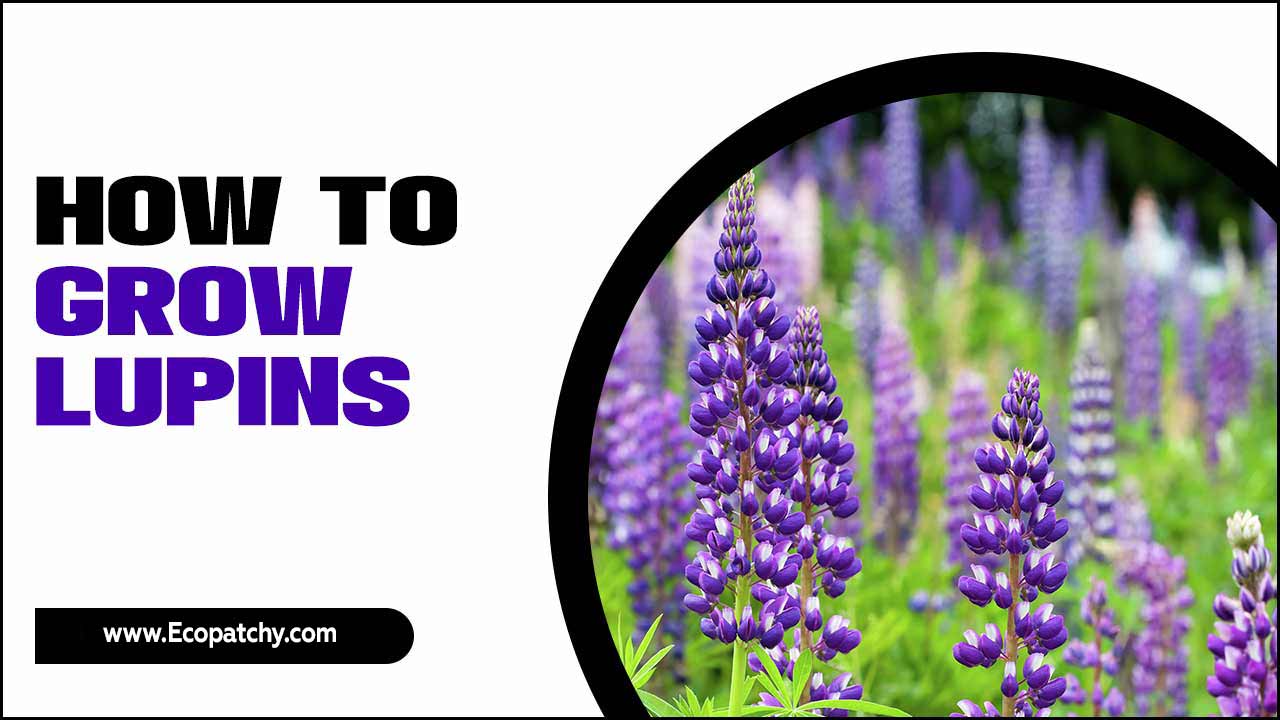
Why Grow Lupine Flowers?
Lupine flowers are popular for gardeners due to their vibrant colors and unique flower spikes. There are several reasons why you should consider growing lupins in your garden. First, lupins are known for attracting pollinators such as bees and butterflies, making them a valuable addition to any garden ecosystem.
Additionally, lupins are relatively low-maintenance plants that can thrive in various soil types and climates. They are also known for their ability to fix nitrogen, which can improve soil fertility.
Finally, lupins can add height and architectural interest to your garden with their tall flower spikes. Whether you want to create a focal point in your flower bed or add color to your landscape, growing lupins is a great choice for any gardener.
How To Grow Lupins: A Step-By-Step Guide
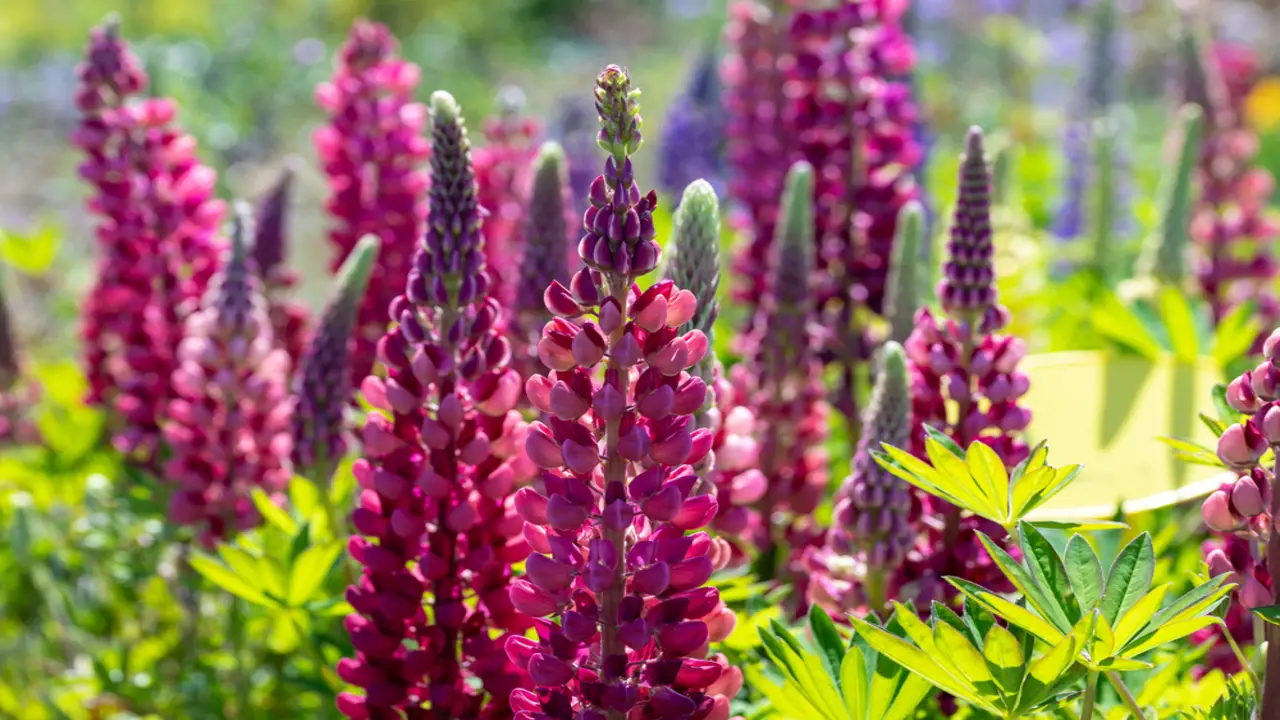
Lupins, members of the pea family, develop long taproots for robust root growth. While they prefer full sun, they can tolerate light shade in warmer climates. These plants thrive in well-drained sandy soil, benefitting from adding organic matter. Choose the appropriate lupin variety for your climate and garden conditions. Prepare the soil by loosening it and removing weeds or debris.
Plant lupins at a depth of 1/4 to 1/2 inch. Ensure newly planted lupins are thoroughly watered and keep the soil consistently moist until established. Mulch around lupine plants to conserve moisture and suppress weed growth. Here is a step-by-step guide on how to grow lupins:
Choosing The Right Lupin Variety
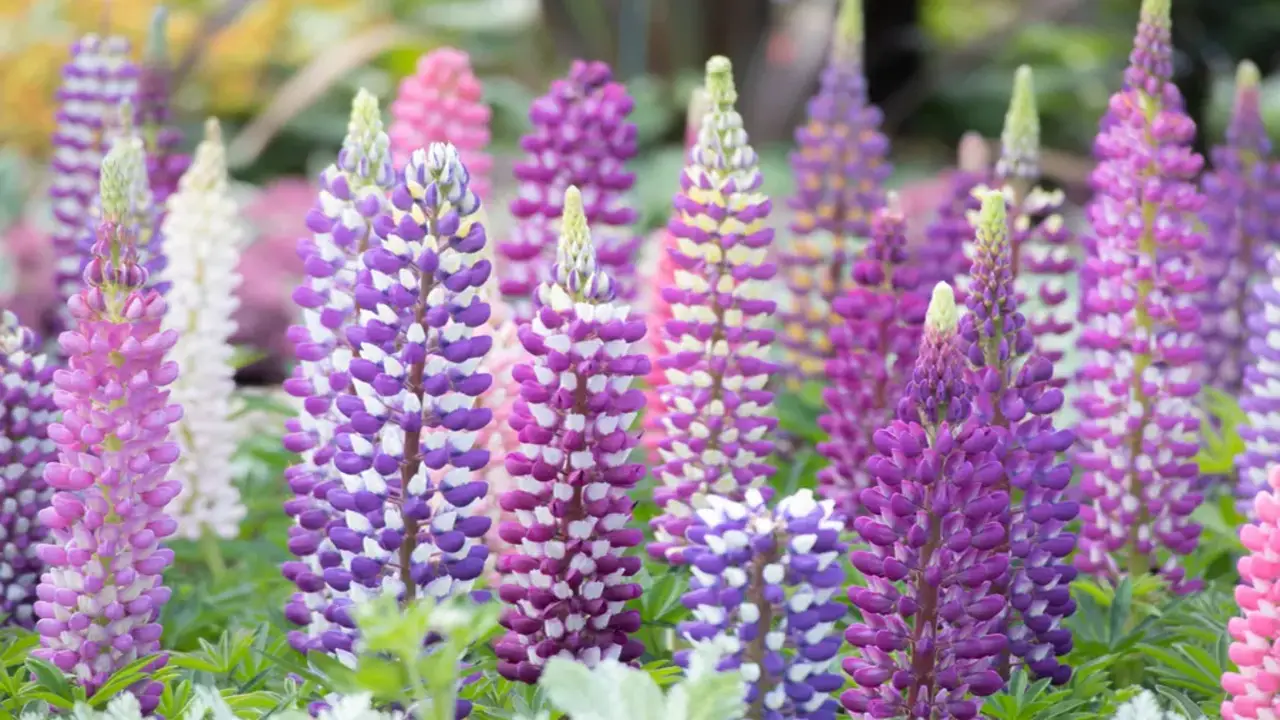
When selecting lupin varieties, consider your climate and growing conditions. Look for varieties with desirable flower colors, sizes, and growth habits. If you want long-term garden enjoyment, opt for perennial cultivars. Lupin hybrids offer a wider range of flower colors and improved traits. For a more naturalistic garden design, explore native lupine species. Choose the right lupin variety to enhance your garden’s beauty and thrive in your environment.
Preparing The Soil For Planting
Before planting lupins, it is important to ensure the soil is well-draining and loose. Incorporating organic matter like compost or aged manure into the soil can help improve its quality. Testing the soil pH and adjusting it if necessary to create slightly acidic conditions is also recommended. Removing weeds or grass from the planting area will reduce competition for nutrients. Loosen the soil using a garden fork or tiller to improve aeration and drainage.
Planting Lupins In The Garden
Sow lupine seeds directly in the garden during early spring or fall, lightly covering them with soil. Soaking the seeds in warm water for a few hours before planting can aid germination. Space lupine plants are approximately 12-18 inches apart for good root development. Choose a sunny spot in the garden, as lupins prefer lots of direct sunlight. Ensure a shallow planting depth to establish optimal growth and flowering.
Watering And Feeding Lupins
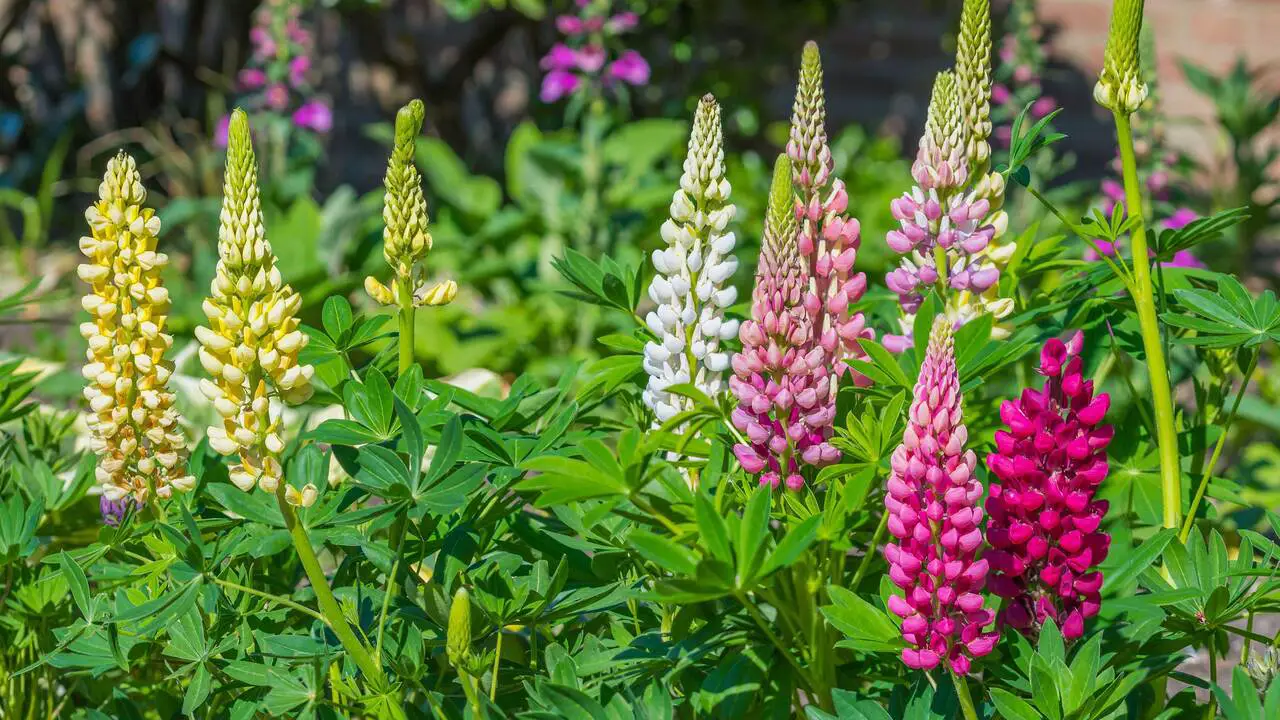
To ensure the healthy growth of lupins, it is important to water them deeply and regularly, especially during hot and dry periods. However, overwatering should be avoided as it can lead to root rot. A balanced fertilizer during the growing season can promote healthy growth, but excessive fertilizer should be avoided to prevent leafy growth with fewer blooms. Monitoring soil moisture levels and adjusting watering accordingly to prevent drought stress is also crucial.
Deadheading Lupins For Re-Bloom
To encourage continuous blooming of lupins, it is important to remove spent flowers regularly. Simply cut off the flower stem just above a set of healthy leaves or lateral bud. Deadheading prevents seed production and redirects energy towards new growth and flower production.
After the first flush of flowers, you can further stimulate re-blooming by pruning the entire plant by one-third. By consistently deadheading and pruning, you can maintain your lupine plants’ overall health and appearance.
Controlling Pests And Diseases
To ensure the health and vitality of your lupine plants, it’s important to monitor them for signs of pests like aphids or spider mites. If an infestation occurs, you can use horticultural oils or insecticidal soaps to control the pests.
Additionally, removing infected plants or parts of plants is crucial to prevent the spread of fungal diseases. Avoiding overhead watering and providing adequate air circulation around the lupines will also help reduce the risk of fungal diseases.
Choosing The Right Variety Of Lupins For Your Garden
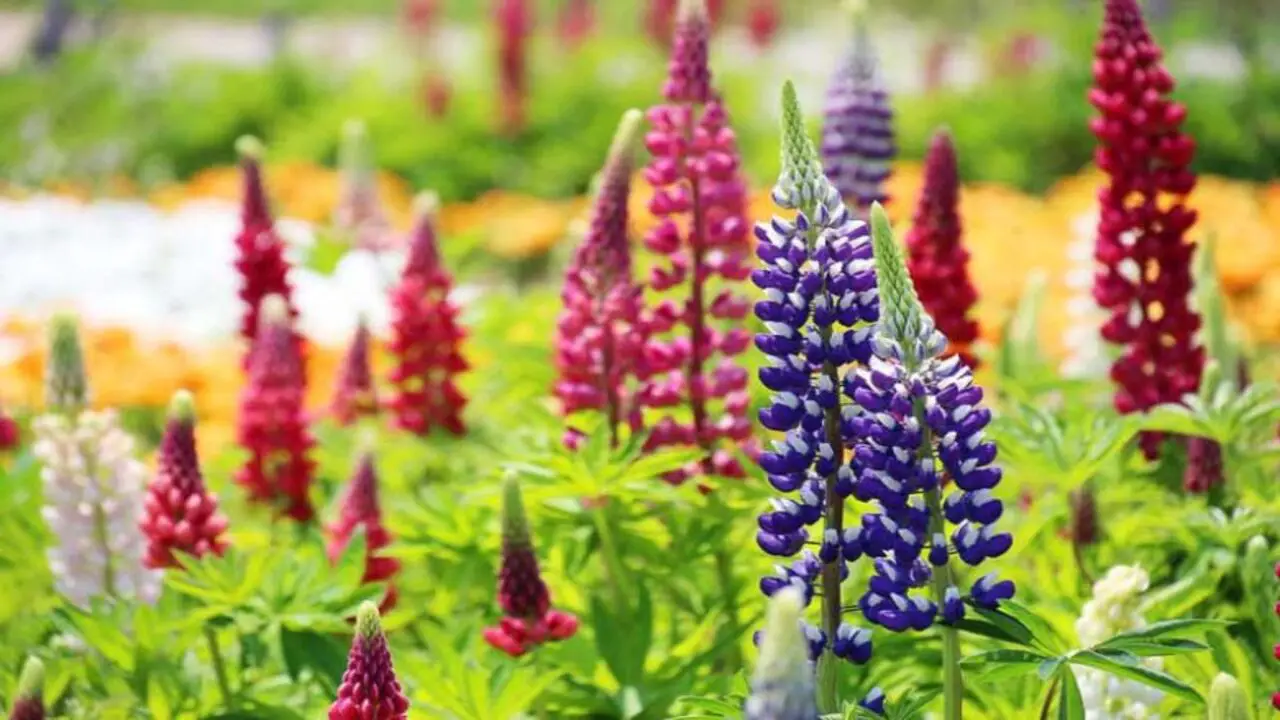
When growing lupins in your garden, choosing the right variety is key to ensuring their success. Many different types of lupins are available, each with its unique characteristics and growing requirements.
By considering these factors and selecting the right variety of lupins for your garden, you can ensure they will thrive and add beauty to your outdoor space. Here are some tips to help you select the right variety for your garden:
- Consider The Climate: Lupins thrive in cooler climates and prefer full sun or partial shade. If you live in a warmer region, look for more heat-tolerant varieties.
- Determine The Height: Lupins come in a range of heights, from dwarf varieties that grow up to 12 inches tall to taller varieties that can reach 3-4 feet. Consider the overall look and scale of your garden when choosing the height of your lupin plants.
- Choose The Color: Lupins come in a wide array of colors, including shades of purple, pink, yellow, and white. Consider the color scheme of your garden and choose a variety that complements or contrasts with other plants.
- Research Disease Resistance: Some lupin varieties are more resistant to diseases such as powdery mildew than others. Check with local nurseries or gardening experts to determine which varieties have better disease resistance in your area.
Essential Factors For Growing Lupines
Growing lupins can be a rewarding and beautiful addition to any garden. By considering these factors and providing optimal growing conditions, you can enjoy vibrant and healthy lupin plants in your garden. Here are some tips for factors to consider when growing lupins:
- Location: Lupins thrive in full sun or partial shade, so choose a location that receives at least 6 hours of direct sunlight daily. They also prefer well-drained soil, so ensure it is loose and not compacted.
- Soil Ph: Lupins prefer slightly acidic to neutral soil, with a pH range of 5.5 to 7.0. Test your soil’s pH and amend it if necessary by adding lime to increase alkalinity or sulfur to increase acidity.
- Watering: Lupins require regular watering, especially during dry periods. Water deeply and thoroughly, ensuring the soil is evenly moist but not waterlogged. Avoid overhead watering as this can lead to fungal diseases.
- Fertilization: Lupins are nitrogen-fixing plants, meaning they have a symbiotic relationship with bacteria in their roots that convert atmospheric nitrogen into a usable form for the plant. However, they still benefit from regular fertilization with a balanced fertilizer high in phosphorus and potassium.
- Pruning: Deadhead spent flowers regularly to promote continuous blooming and prevent seed formation. Cut back the entire plant to ground level in late fall or early spring to encourage new growth.
Troubleshooting Common Problems In Growing Lupins
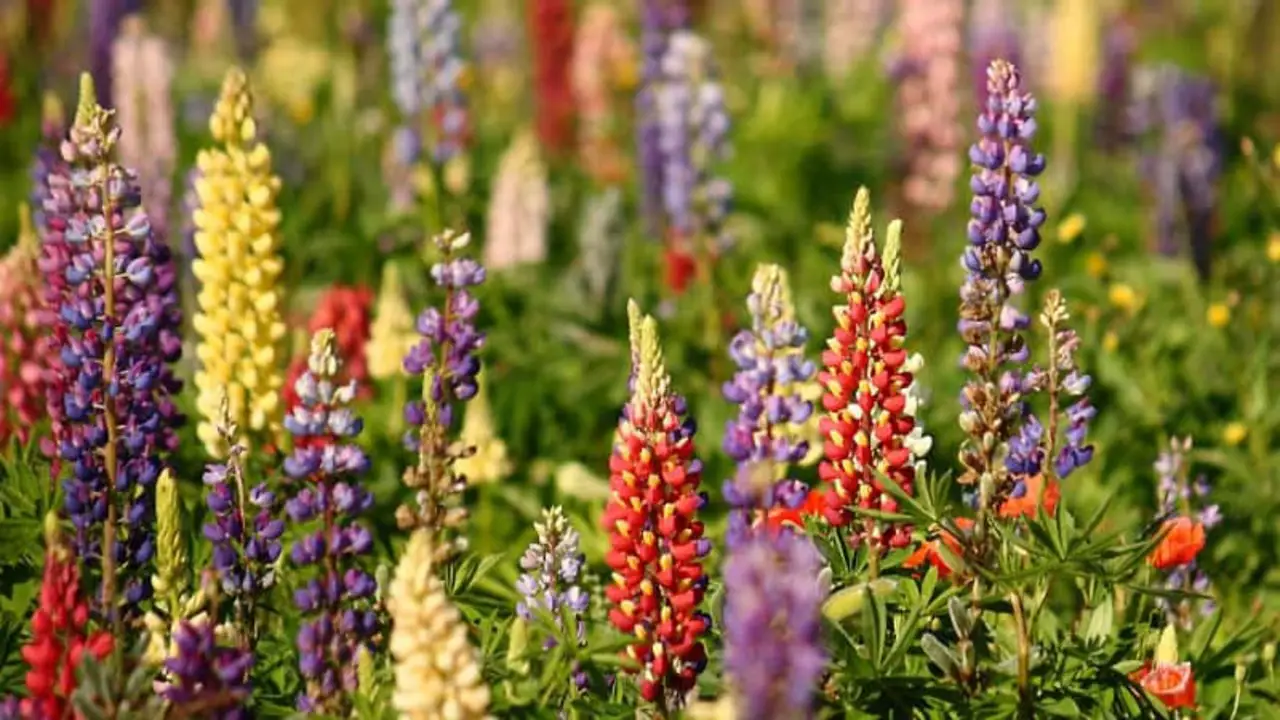
Growing lupins can be a rewarding experience, but like any plant, they can encounter some common problems along the way. Addressing these common problems in growing lupins can increase your chances of success, and enjoy beautiful, healthy plants in your garden. Here are some tips to help troubleshoot and address these issues:
- Poor Germination: If your lupin seeds are not germinating properly, it could be due to old or low-quality seeds. Try purchasing fresh seeds from a reputable source and ensure that you provide the right germination conditions, such as moist soil and adequate sunlight.
- Yellowing Leaves: Yellowing leaves can indicate a nutrient deficiency, particularly nitrogen. Consider fertilizing your lupins with a balanced fertilizer to give them the necessary nutrients. Be sure not to over-fertilize, as this can also cause issues.
- Pests: Lupins can attract pests such as aphids and slugs. Regularly inspect your plants for signs of infestation and take appropriate measures to control the pests, such as using organic pest control methods or introducing beneficial insects.
- Powdery Mildew: Powdery mildew is a fungal disease that can affect lupins, causing a white powdery coating on the leaves. To prevent this, ensure proper air circulation around your plants by spacing them adequately and avoiding overhead watering.
- Stunted Growth: If your lupins are not growing as expected or appear stunted, it could be due to poor soil quality or insufficient sunlight. Ensure that your plants receive enough sunlight, and consider amending the soil with organic matter to improve its fertility and drainage.
Harvesting And Storing Lupin Seeds For Future Planting
Harvesting and storing lupin seeds is an important step in growing lupins year after year. To start, wait until the seed pods turn brown and begin to dry out on the plant. This indicates that the seeds are mature and ready for harvesting. Remove the seed pods from the plant and place them in a paper bag or container to allow them to continue drying for a few weeks.
Once completely dry, gently crush the seed pods to release the seeds. Separate any debris from the seeds and store them in a cool, dry place in an airtight container or envelope labeled with the harvest date. Properly stored lupin seeds can remain viable for several years, allowing you to continue growing these beautiful flowers season after season.
Conclusion
Growing lupins can be a rewarding and enjoyable experience for any gardener. By understanding the basics of lupins and their growth requirements, choosing the right variety, preparing the soil, planting properly, and providing adequate water and nutrients, you can ensure your lupin plants’ healthy and vibrant growth.
Remember to deadhead for re-bloom, control pests, and disease, and maintain the overall health of your lupins. With these tips and techniques, you can grow beautiful lupins that will add color and charm to your garden for years. So it is essential to know how to grow lupins.
Frequently Asked Questions
1.Do Lupines Come Back Every Year?
Ans: Lupines, being perennials, will return year after year. They can self-seed, spreading throughout your garden. To maintain their health, dividing them every three to four years is recommended. Optimal growth is achieved in well-drained soil and full sun exposure.
2.Is Lupine Easy To Care For?
Ans: Lupins are low-maintenance plants that thrive in various soils and prefer full sun to partial shade. Regular deadheading promotes more blooms, while consistent watering keeps the soil moist. Lupins are generally easy to care for and a great addition to any garden.
3.Should I Cut Down Lupine After It Has Gone To Seed?
Ans: Cutting down lupine after it has gone to seed is a personal choice. Leaving the seed pods can promote its spread, but you can trim the plant if you want to prevent self-seeding or tidy up your garden. Remember to wear gloves, as some lupine species are toxic.
4.Where And When Should You Plant Lupin Seeds?
Ans: To successfully grow lupin seeds, choosing well-draining soil with a pH of 6.0-6.5 is important. Plant the seeds in spring after the last frost or fall before the first frost. Sow them 1 inch deep and space them 12 inches apart. Provide regular watering and ample sunlight for optimal growth.
5.Do I Take The Lupine Seeds That Are Ripe And Just Distribute Them Other Places Where I Want Them?
Ans: Yes, you can disperse mature Lupine seeds in desired areas for growth. However, ensure the soil is suitable for Lupine cultivation. Alternatively, propagate through cuttings or divide mature plants. For optimal results, sow seeds in autumn or early spring.






